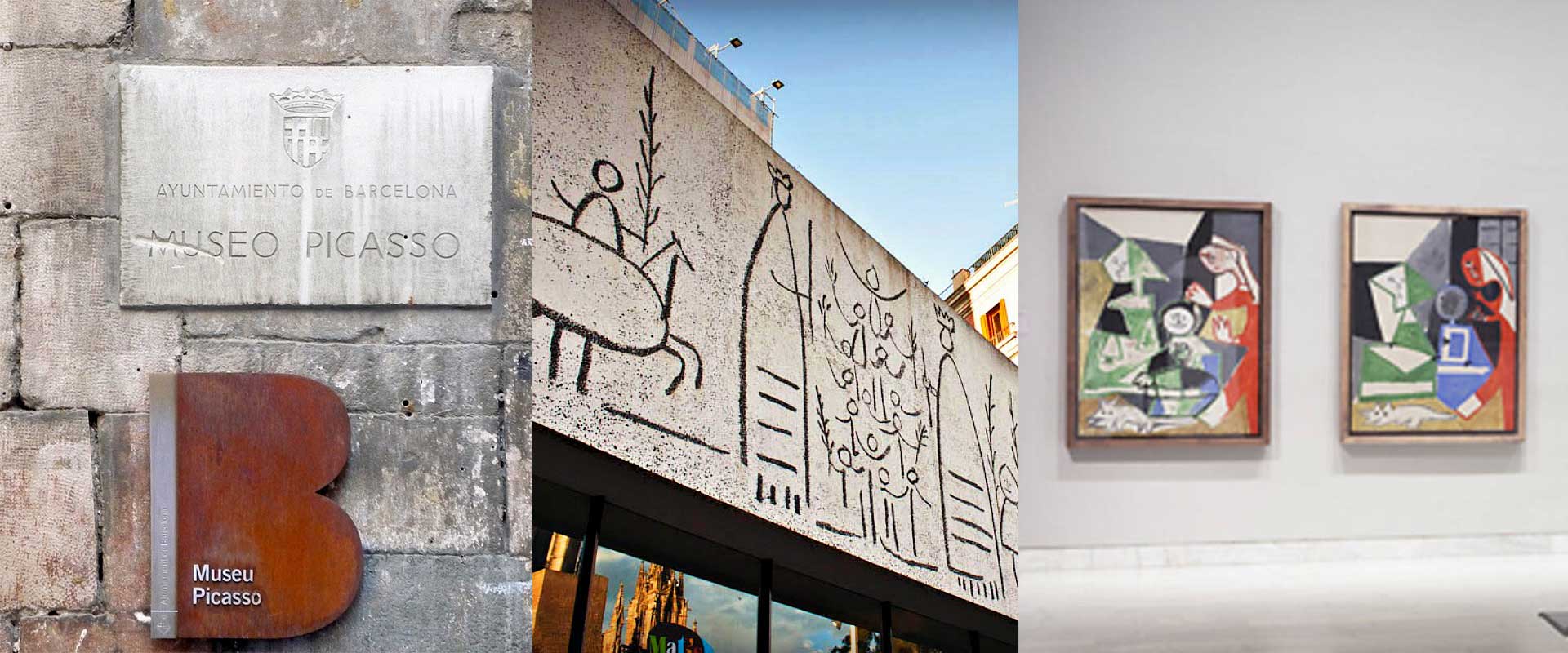Pablo Picasso and Barcelona share a bond that shaped both the artist and the city. Although born in Málaga, Spain, Picasso spent some of his most formative years in Barcelona. It was here that he honed his artistic vision, developed friendships with other creatives, and found the freedom to experiment. To walk through the streets of Barcelona today is to trace the steps of the young Picasso as he evolved from a prodigious student into a daring innovator who would transform modern art.
Picasso’s Arrival in Barcelona
Family Relocation and Early Studies
In 1895, Picasso’s family moved from A Coruña to Barcelona, where his father secured a teaching position at the School of Fine Arts, known as La Llotja. At just 13 years old, Picasso enrolled at the academy and immediately impressed his teachers with his technical skills.
Barcelona provided him with more than formal education—it offered a vibrant cultural backdrop where tradition and avant-garde ideas coexisted. This balance between heritage and innovation would deeply influence Pablo Picasso art for decades to come.
First Exhibitions in the City
By 1900, Picasso was already exhibiting his works at the prestigious Els Quatre Gats café, a gathering place for intellectuals and artists. These shows marked his first steps into the public art world.
Barcelona’s Influence on Picasso’s Early Style
The Blue Period in Context
Barcelona played a pivotal role in the development of Picasso’s Blue Period. It was here that he experienced both inspiration and tragedy, including the death of his close friend Carlos Casagemas. The grief translated into works of deep melancholy, such as The Old Guitarist.
A Hub of Modernist Culture
The city’s rich Modernisme architecture, seen in buildings by Antoni Gaudí, and its flourishing café culture nurtured Picasso’s creativity. Unlike the conservatism of Madrid, Barcelona embraced bold experimentation, which encouraged Picasso to break away from traditional art.
Tracing Picasso’s Steps Through Barcelona Today
For those who want to follow Picasso’s path, Barcelona offers an immersive journey.
Key Picasso Landmarks in Barcelona
- Museu Picasso (Picasso Museum): Located in the Gothic Quarter, the museum houses over 4,000 of his works, focusing on his formative years. Highlights include Science and Charity and his reinterpretations of Las Meninas. Insights into these collections are explored in Picasso Museum Highlights: A Must-See for Art Lovers.
- Els Quatre Gats: The café where Picasso held his first exhibition and mingled with Catalonia’s modernist intellectuals.
- La Llotja School of Fine Arts: The institution where his father taught and Picasso refined his technical abilities.
- Carrer d’Avinyó: This street, filled with brothels and vibrant nightlife, inspired Les Demoiselles d’Avignon, a revolutionary Cubist work.
- Parc de la Ciutadella: A place Picasso sketched during his youth, capturing the city’s energy.
Walking in Picasso’s Footsteps
A stroll through Barcelona’s El Born and Barri Gòtic neighborhoods allows visitors to imagine the world Picasso inhabited. From narrow medieval streets to bustling cultural centers, the city itself is an open-air museum of his inspiration.
Comparison: Picasso’s Barcelona vs. Paris Years
| City | Period | Influence | Key Works |
|---|---|---|---|
| Barcelona | 1895–1904 | Early training, Blue Period beginnings, Catalan Modernisme | Science and Charity, The Old Guitarist |
| Paris | 1904–1914 | Avant-garde circle, Cubism, rise to fame | Les Demoiselles d’Avignon, early Cubist works |
| Barcelona (Return Visits) | Post-1917 | Revisiting roots, exhibitions | Works later displayed in Museu Picasso |
While Paris launched Picasso’s international fame, Barcelona shaped his foundation. Without Barcelona’s energy, he may never have developed the daring experimentation that defined him.
Picasso and Barcelona’s Cultural Identity
The City’s Pride in Picasso
Barcelona proudly claims Picasso as one of its own, despite his Málaga origins. The establishment of the Museu Picasso in 1963 cemented this relationship, making it one of the most visited museums in Spain.
Artistic Dialogue with the City
Picasso gave Barcelona the honor of preserving his early works, ensuring that the city would forever be tied to his artistic journey. In this way, Barcelona became not just a backdrop but a central character in the story of Picasso.
Why Picasso Barcelona Spain Remains Important
- Historical Roots: It was here that Picasso transitioned from student to visionary.
- Cultural Resonance: Barcelona’s energy reflected in his early masterpieces.
- Tourist Experience: The Museu Picasso attracts millions, making the city a global hub for modern art lovers.
- Artistic Inspiration: The city’s modernist architecture and intellectual spirit continue to mirror Picasso’s innovation.
The intertwining of artist and city ensures that when we speak of famous artist profiles, Picasso’s Barcelona years are essential to understanding his genius.
Conclusion
Exploring Picasso Barcelona Spain is to witness the birth of a genius. From sketching in the classrooms of La Llotja to exhibiting at Els Quatre Gats, Picasso grew into the artist who would change the course of modern art. Barcelona provided him with not just technical training but also cultural freedom and inspiration. Today, tracing his steps through the city allows visitors to connect with Picasso on a personal level, walking the very streets that shaped his vision.
FAQs on Picasso Barcelona Spain
Why is Barcelona important in Picasso’s life?
Barcelona was where Picasso spent his teenage and early adult years, shaping his Blue Period and beginning his journey as a modern artist.
Where can I see Picasso’s works in Barcelona?
The Museu Picasso in the Gothic Quarter houses over 4,000 works, showcasing his formative years and his unique interpretation of Las Meninas.
Did Picasso live in Barcelona permanently?
No, while he lived in Barcelona for several years, he eventually moved to Paris, though he returned to Barcelona frequently throughout his life.
What is the most famous Picasso site in Barcelona?
The Museu Picasso is the most significant, but Els Quatre Gats café and La Llotja are equally important for understanding his journey.
How is Barcelona celebrating Picasso today?
Through exhibitions, guided tours, and the preservation of his legacy in the Museu Picasso, Barcelona continues to honor Picasso’s enduring influence.





